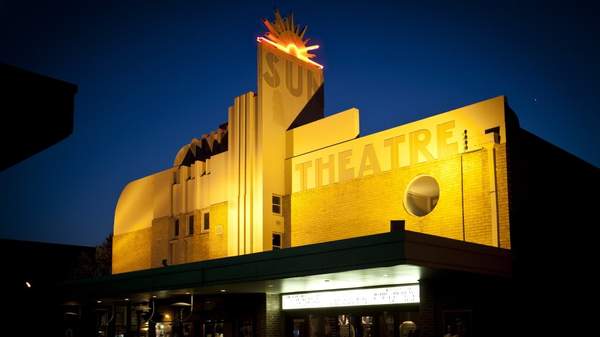Overview
Explore hidden nooks and marvel at grand designs as doors open all around town for the latest edition of Open House Melbourne. Returning for its ninth consecutive year, this year's event is happening this weekend July 30-31, and will for the first time extend beyond the CBD and into the surrounding suburbs. In fact, the 2016 program features a whopping 140 buildings, stretching all the way from Newport to Bundoora.
Highlighting many an architectural marvel, the Open House program covers everything from government buildings including Parliament House and the Supreme Court of Victoria; commercial spaces like Hassell Studios' Medibank building; houses of worship such as St Paul's Cathedral and East Melbourne Synagogue; cultural institutions like the Athenaeum Theatre and the State Library; and sporting venues including AAMI Park and the National Tennis Centre. Pop across the Yarra and you can also pay a visit to the National Gallery of Victoria, or stargaze at the Melbourne Observatory nestled inside the Royal Botanic Gardens.
And that's just in the city, mind you. Venture north and you can explore Circus Oz HQ or wander through the Melbourne General Cemetery. Alternatively, head west for a look at Yarraville's Sun Theatre and the Footscray Town Hall. Local history buffs might enjoy a gander at the city's heritage tram fleet, housed in the Hawthorn Tram Depot. And what trip through Melbourne could truly be called complete without paying a visit to Luna Park?
Below, we've compiled a list of five must-visit sites on the Open House Melbourne program. Time to get explorin'.
ABBOTSFORD CONVENT
These days, most people probably know Abbotsford Convent as the home of Lentil as Anything and the Shadow Electric Outdoor Cinema and Bandroom. But the site has a rich history that pre-dates European settlement, when it served as a meeting point for the people of the Wurundjeri and Kulin nations. Since then it's been everything from a university to a multi-purpose arts and exhibition space. The convent will host several tours throughout the Open House weekend, with a focus on the venue's social and architectural history as well as its magnificent heritage-listed gardens.
JACK'S MAGAZINE
Located by the banks of the Maribyrnong River out near the Melbourne Showgrounds, Jack's Magazine is a relic of a bygone era. First opening in 1878, the former explosives store consists of 12 main buildings shielded by blast walls made of earth and bluestone. Explore the tunnels, tramways and cave-like storerooms that link bank to Victoria's early industrial past. We just hope nobody left any barrels of gunpowder lying around.
MELBOURNE GENERAL CEMETERY
Put your nerves to the test with a (daylight) visit to the Melbourne General Cemetery, the final resting place of former Prime Minister Sir Robert Menzies and failed continental explorers Burke and Wills. Tours will take visitors along the winding cemetery paths, past several significant graves and historic sites, and through the two-storey bluestone gate lodge. While you're there, keep your eyes peeled for Melbourne's most famous ghost, Federici, who supposedly splits his time between the cemetery where he's buried and the Princess Theatre where he died.
SUN THEATRE
Take a look behind the scenes at one of Melbourne's most iconic cinemas: the art deco Sun Theatre in Yarraville. First opened back in 1938, the Sun has been a mecca of foreign, arthouse and golden age Hollywood films in the inner west for decades. As part of Open House, movie lovers can wander through the eight-screen cinema at their leisure, or take a guided tour through areas normally off limits to the public. Ever wanted to watch a classic motion picture from inside the projection room? This might be your one and only chance.
VICTORIAN COMPREHENSIVE CANCER CENTRE
When US Vice President Joe Biden visited Melbourne earlier this month, it was to cut the ribbon on the $1 billion Victorian Comprehensive Cancer Centre in Parkville. The new home of the Peter MacCallum Cancer Institute, the centre sits at the cutting edge of cancer treatment, education and research, boasting state-of-the-art facilities and equipment. Over the course of a 45-minute guided tour, visitors can catch a glimpse of the pioneering work being done by the centre's staff of more than 2000 doctors and scientists, who have helped make Australia a world leader in this critically important field.
